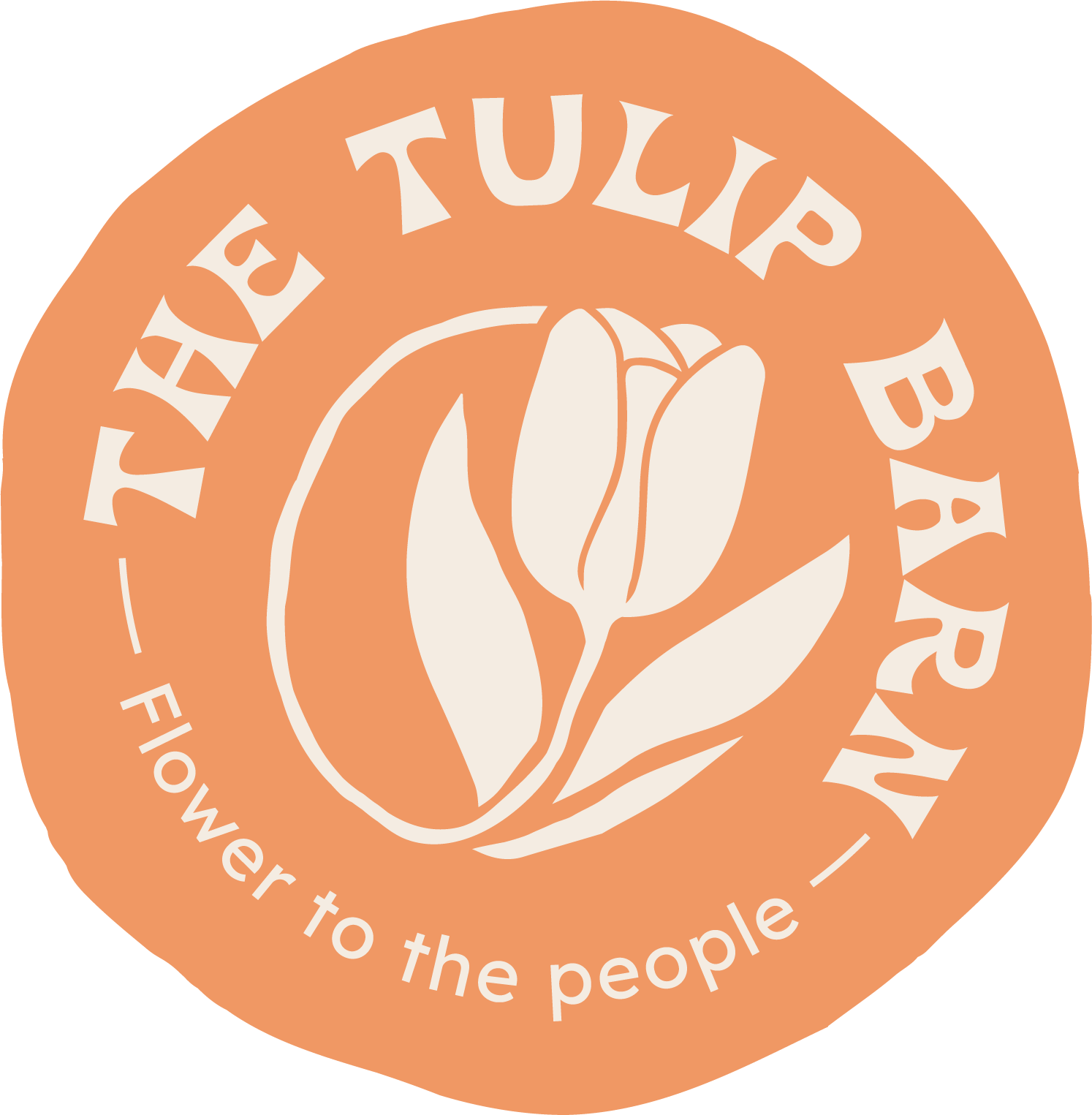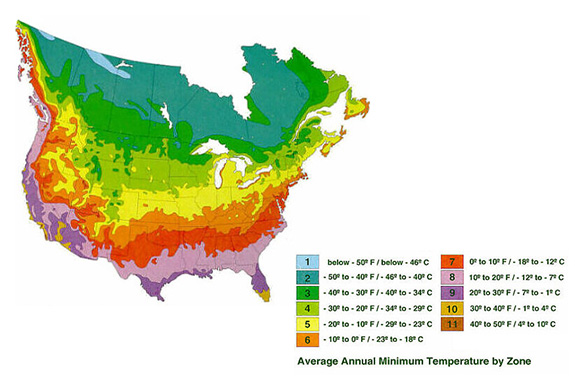1. Recommended
planting time
Soil temperatures must be 55 ◦F or below to ensure proper root development before winter sets in. Spring flowering bulbs must be planted in the fall. You can continue planting as long as you can get in the ground, but ideally around the time of your first frost, and not later than the onset of winter.
Average planting times for spring bulbs:
- September – October: zones 4 and 5
- October – early November: zones 6 and 7
- November – early December: zones 8 and 9
- Late December – early January: zone 10
In warmer climates (zones 8-10) spring bulbs need to be pre-cooled for 8-10 weeks to ensure proper root development and to avoid stunted blooms. We offer complementary pre-cooling to USA customers at our NY warehouse by request only. Please note that pre-chilled bulbs must be planted immediately upon receipt and are unlikely to return the following year.
Always store bulbs in a cool, dark, dry, well ventilated place. Bulbs can tolerate temperatures between 35 and 75 degrees F.
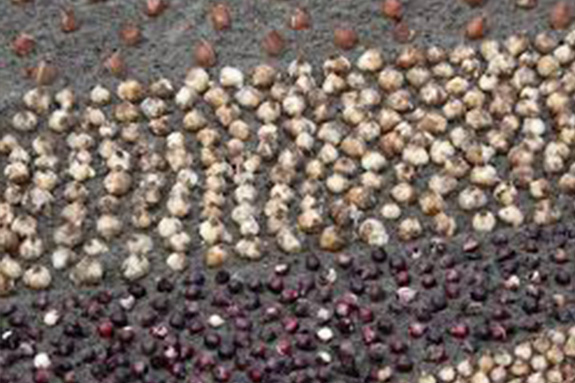
2. Soil
conditions
Good drainage and plenty of sunlight are critical. Never plant bulbs where water pools, all bulbs are harmed by “wet feet”. If you have heavy clay soil, loosen to 10” deep before planting. For optimal results, apply a slow release nitrogen-phosphorus-potassium fertilizer (10-10-10 or 3-5-3). We like Espoma Organic Bulb Tone. Early bloomers can be planted under trees, where they will get enough sunlight prior to leaves regrowing. If the same type of bulb is planted in a bed year after year, Rhizoctonia may develop. We prevent this in our farm by crop rotation.
3. Planting depth
and distance
The general rule of a thumb is to plant bulbs at a depth of double the height of the bulb. Although not necessary as most bulbs will adjust on their own, it is good practice to plant bulbs in an upright position. Small bulbs can be scattered.
The spacing of the bulbs depends on the visual effect you are looking for. When planting mixtures with sequential bloom times, make sure to plant them closer together than you would a single variety.
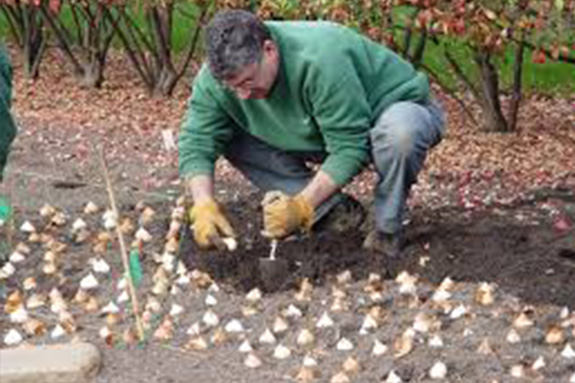
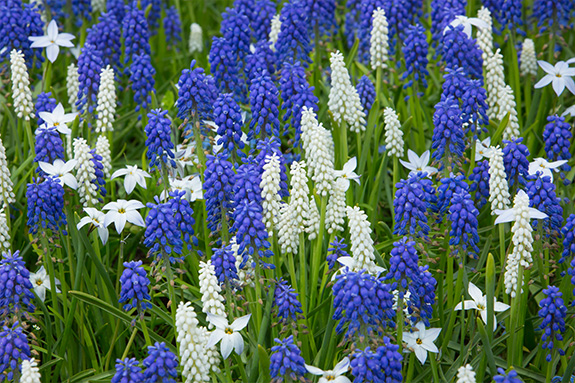
4. Choosing the right
combination of bulbs
For the right choice of spring bulbs it is important to decide first which effect is desired. Bulbs can be grown in many ways, from formal to meadow gardens, scattered in lawns, under trees or strategically planted in beds or perennial borders. In a successful bulb combination, not only the colors but also the flower shapes are balanced. A classic bulb planting consists of at least 6 bulbs (tulips, daffodils, hyacinths) per square foot. When mixing tulips with perennials this can be 3-4 bulbs. Hyacinths are often applied in classic flower beds. All varieties have more or less the same height, which gives a peaceful effect. Tulips and daffodils combine very well because of their shapes and colors. The more natural looking daffodils in soft tones with the “royal” tulips in every possible color.
5. Prolong the flowering period
by mixing bulb types
An informal effect will be achieved by combining bulbs with different flowering times. This can be different types of tulips, like our mixed and solid colors or our long-lasting daffodil mixes.
Combining tulips and daffodils with hyacinths and smaller bulbs will make a perfect and long-lasting spring display. As the options are endless and a matter of personal taste, we do not offer any standard mixes with multiple bulb types. If you need any assistance or advice on mixing bulbs, just let us know, we are ready to help! As an example, this blend consists of: muscari, hyacinths Pink Pearl, Darwin Hybrid and Triumph tulips, tulips Yellow Pomponette.
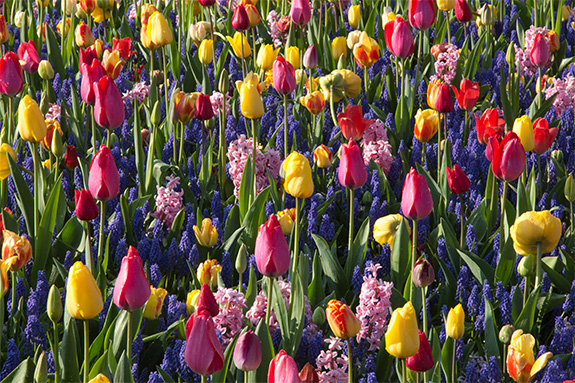
6.
Perennializing
Many bulbs will perennialize if properly handled. It is vitally important for foliage to be allowed to die back (especially with daffodils). The browning, unsightly foliage you will see is an important part of the process. Do not cut back until the foliage has finished dying back and lies limp on the ground (6-8 weeks). Foliage that is mowed/trimmed/tied does not allow the bulbs ample time to re-asorb nutrients, and in turn they will not have sufficient energy to bloom the following spring.
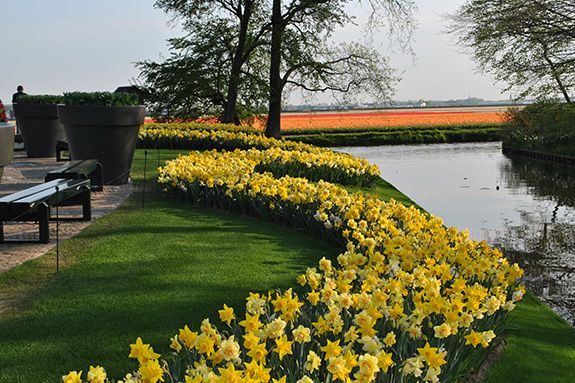
7. Bulbs in lawns
and grass strips
The earliest flowering bulb types are the best choice for planting under grass, as the bulb foliage has to be allowed to die down before mowing. Some bulbs like Chionodoxa, Scilla or Puschkinia depend upon seeds for propagation. These seeds take about 6 -8 weeks after flowering before they are ripe. When the seeds fall from the plants, the mowing can start.
Here are some suggestions: chionodoxa luciliae, crocus species and large flowering, fritillaria meleagris, all daffodils, leucojum aestivum and scilla siberica.
8. Mass plantings of bulbs
in beds and borders
To enjoy perennial and rose borders earlier in the season, spring flowering bulbs can be added. As a bonus, the perennials will later hide the withering leaves of the bulbs. Large plantings of hyacinths, daffodils and tulips add a beautiful multi-color effect to the border. Tulips make a lovely combination with wallflowers, pansies, and forget-me-nots.
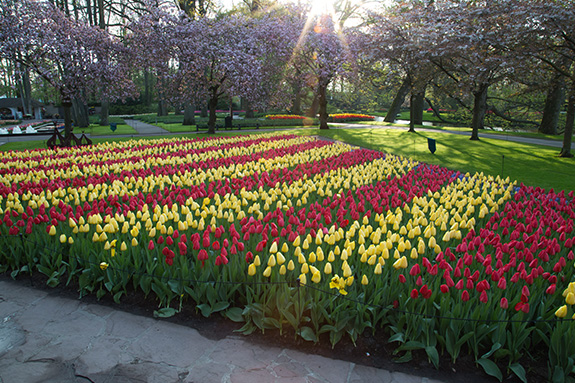
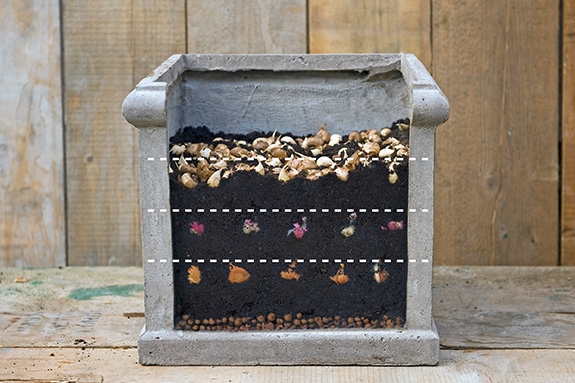
9. Bulbs in flower
containers
Flower containers are being used more and more to upgrade the appearance of urban areas and access roads. Bulbs can play an important role in container planting, as the flowering can start as early as February with crocus. Plant bulbs in layers (the bulbs flowering last are planted at the lowest level) or work with removable inner containers. The flowers can be replaced when their blooming period is finished.
Especially in the winter period, too much water is dangerous to the bulbs. Therefore we advise to place the containers on blocks, so that the water can freely flow away. Use a layer of clay granules at the bottom and add a layer of compost between the bulb layers. We advise to choose shorter flowering bulb types as they are less susceptible to wind damage.
